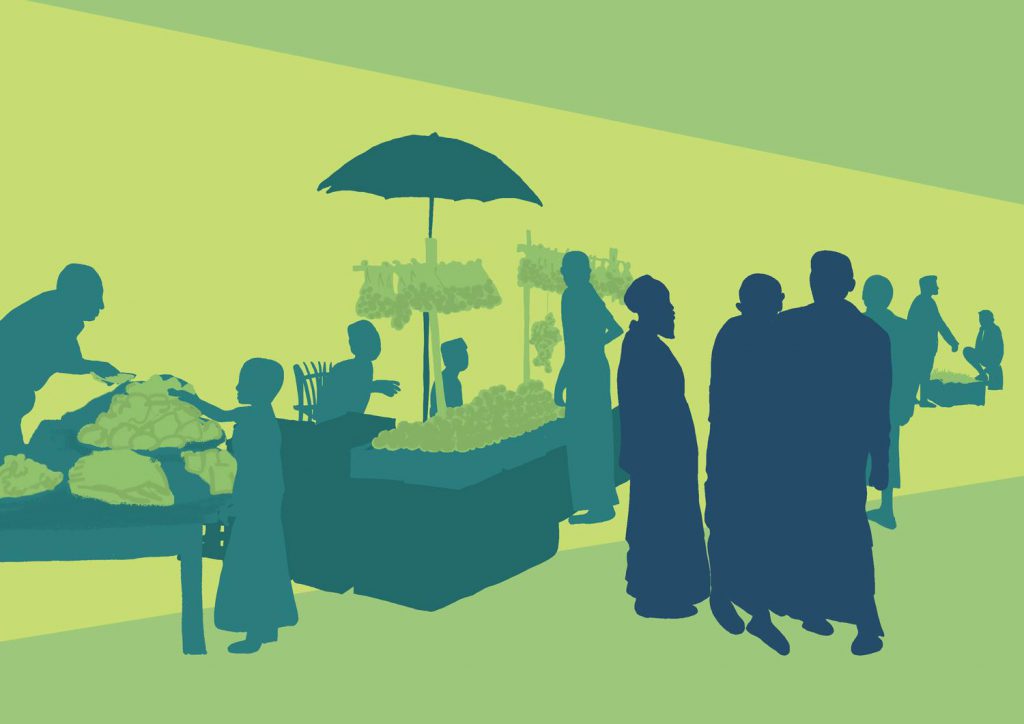Market dynamics shift rapidly in a setting where the economy is still adjusting to the sudden addition of the large population of displaced people.
Items not covered by aid, such as supplemental foods and cooking ingredients, clothing, and medicine, are all available in the makeshift markets that have grown throughout the camps since 2017. The markets provide a source of livelihood for Rohingya shopkeepers as well as for businesspeople from the local Bangladeshi host communities. They also supply needed goods to the camps, propelling the growth of an informal economy.
The average monthly household income is 2,648 taka (30 USD), but 45 percent of households have no income at all. Bangladesh does not allow formal employment for refugees, limiting their legal work opportunities to Cash for Work and NGO volunteer jobs, for which they receive a small stipend. Some camp residents also find work in host communities, often as day laborers. However, this is illegal, and a source of social tensions, because Rohingya, who can supplement their meager earnings with aid, drive local wages down and are perceived as unfair competition by local laborers.
Rohingya entrepreneurs’ economic activity can be broadly classified into three areas: production, retail, and services. Each of the three occurs throughout the camps, and come with distinct opportunities, risks, and challenges. Child labor is a common practice across sectors, and there are no mechanisms to control labor exploitation.
Vast Majority of Rohingya Report Extreme Difficulty in Meeting Monthly Household Expenses
n = 1,565
Sources of income earned by women
n = 207; multiple response
12% of the households received an income form women contribution by

